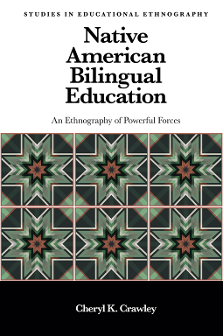
Index
Native American Bilingual Education
ISBN: 978-1-83909-477-4, eISBN: 978-1-80043-316-8
ISSN: 1529-210X
Publication date: 6 November 2020
Citation
(2020), "Index", Native American Bilingual Education (Studies in Educational Ethnography, Vol. 14), Emerald Publishing Limited, Leeds, pp. 223-229. https://doi.org/10.1108/S1529-210X20200000014011
Publisher
:Emerald Publishing Limited
Copyright © 2021 Cheryl K. Crawley. Published under exclusive licence by Emerald Publishing Limited
INDEX
- Prelims
- Chapter 1 A Study in the Anthropology of Education
- Chapter 2 Crow Country
- Chapter 3 The Language of Education in Crow Country
- Chapter 4 Indian Bilingual Education
- Chapter 5 Complex Organizations Change Theory
- Chapter 6 The Bilingual–Bicultural Project on the Crow Reservation
- Chapter 7 Speak English; Talk Indian: Conclusions and Implications
- Appendix 1 Policy On Collecting And Processing Crow Cultural Materials
- Appendix 2 Research Design and Procedures
- References
- Index